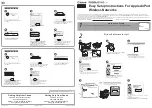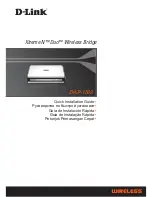
88
D-Link DAP-2620 User Manual
Knowledge Base
Knowledge Base
Wireless Basics
D-Link wireless products are based on industry standards to provide high-speed wireless connectivity that is easy to use within your home,
business or public access wireless networks. D-Link wireless products provides you with access to the data you want, whenever and wherever
you want it. Enjoy the freedom that wireless networking can bring to you.
WLAN use is not only increasing in both home and office environments, but in public areas as well, such as airports, coffee shops and universities.
Innovative ways to utilize WLAN technology are allowing people to work and communicate more efficiently. Increased mobility and the absence
of cabling and other types of fixed infrastructure have proven to be beneficial to many users.
Wireless adapter cards used on laptop and desktop systems support the same protocols as Ethernet adapter cards, allowing wireless users to use
the same applications as those used on a wired network.
People use WLAN technology for many different purposes:
y
Mobility -
productivity increases when people can have access to data in any location within the operating range of their WLAN. Management
decisions based on real-time information can significantly improve the efficiency of a worker.
y
Low implementation costs -
WLANs are easy to set up, manage, change and relocate. Networks that frequently change can benefit from
WLAN’s ease of implementation. WLANs can operate in locations where installation of wiring may be impractical.
y
Installation and network expansion -
by avoiding the complications of troublesome cables, a WLAN system can be fast and easy during
installation, especially since it can eliminate the need to pull cable through walls and ceilings. Wireless technology provides more versatility by
extending the network beyond the home or office.
y
Inexpensive solution -
wireless network devices are as competitively priced as conventional Ethernet network devices. The DAP-2620 saves
money by providing users with multi-functionality configurable in four different modes.
y
Scalability -
Configurations can be easily changed and range from Peer-to-Peer networks, suitable for a small number of users to larger
Infrastructure networks to accommodate hundreds or thousands of users, depending on the number of wireless devices deployed.







































